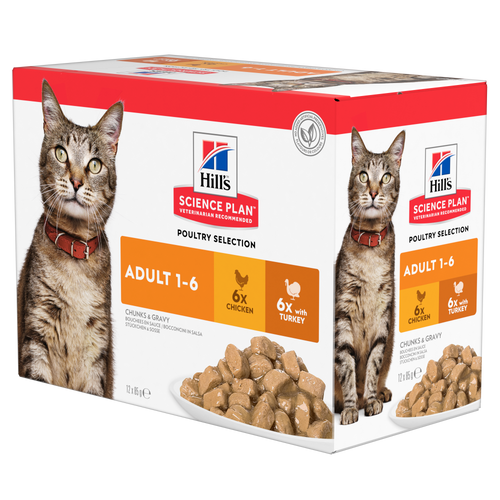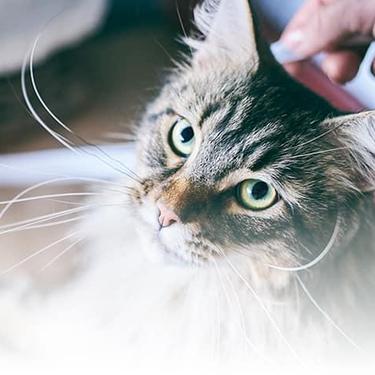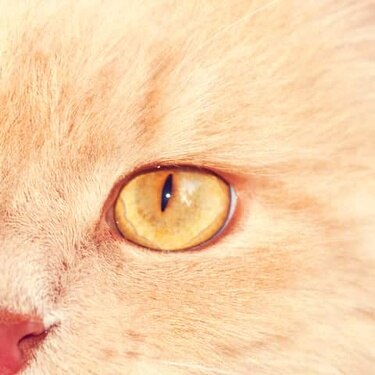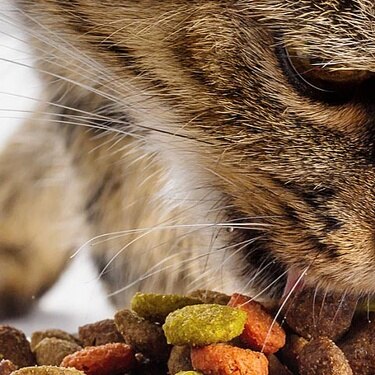
-
Find the right food for your petTake this quiz to see which food may be the best for your furry friend.Find the right food for your petTake this quiz to see which food may be the best for your furry friend.Featured products
 Puppy Food
Puppy FoodHill's Science Plan Puppy Multipack Wet Dog Food with Chicken & Beef are complete premium pet foods for growing puppies from weaning until 1 year old and for pregnant and nursing dogs. Your puppy will love these deliciously smooth and savoury minced loaves, formulated for balanced nutrition and overall health.
Shop Now Mature Adult Dog Food
Mature Adult Dog FoodHill's Science Plan Mature Adult Multipack Wet Dog Food with Chicken & Beef are complete premium pet foods for mature adult dogs from 7 years. Your dog will love these deliciously smooth and savoury minced loaves, formulated to deliver the appropriate amount of energy to support the needs of adult dogs.
Shop Now Adult Wet Dog Food with Beef
Adult Wet Dog Food with BeefHill's Science Plan Adult Multipack Wet Dog Food with Chicken, Beef & Turkey are complete premium pet foods for adult dogs from 1 year. Your dog will love these deliciously smooth and savoury minced loaves, formulated for balanced nutrition and overall health.
Shop NowFeatured products Light Adult Multipack Wet Cat Food with Chicken & Ocean Fish
Light Adult Multipack Wet Cat Food with Chicken & Ocean FishTender chicken chunks in gravy for cats, with L-carnitine and fewer calories for ideal weight management. Packed with high-quality protein, omega-6s, and vitamin E for shiny fur and healthy skin.
Shop Now Mature Adult Wet Cat Food with Chicken
Mature Adult Wet Cat Food with Chicken
Tender chicken chunks in gravy for mature adult cats. Made with easy-to-digest ingredients, high-quality protein for lean muscle maintenance and antioxidant vitamins C+E for optimal health.
Shop Now Adult Multipack Wet Cat Food with Beef, Ocean Fish & Chicken
Adult Multipack Wet Cat Food with Beef, Ocean Fish & ChickenTender chunks in gravy for cats, with high-quality protein to maintain lean muscle. With vitamin E and omega-3s & -6s for healthy skin and balanced minerals to support healthy vital organs.
Shop Now -
Dog
- Dog Tips & Articles
-
Health Category
- Weight
- Food & Environmental Sensitivities
- Urinary
- Digestive
- Joint
- Kidney
-
Life Stage
- Puppy Nutrition
- Adult Nutrition
- Senior Nutrition
Cat- Cat Tips & Articles
-
Health Category
- Weight
- Skin & Food Sensitivities
- Urinary
- Digestive
- Kidney
-
Life Stage
- Kitten Nutrition
- Adult Nutrition
Featured articles The Incredible Science Behind Your Pet's Microbiome
The Incredible Science Behind Your Pet's MicrobiomeLearn what your pet's microbiome is, how it contributes to your pet's gut and overall health, and why nutrition is important in maintaining healthy microbiomes.
Read More Show some love with wet foods: a great choice for pets with health issues
Show some love with wet foods: a great choice for pets with health issuesShow some love with wet foods: a great choice for pets with health issues.
Read More The Right Diet For Your Pet
The Right Diet For Your PetIn people, the right diet is very important. If you are eating the wrong way for your metabolism, activity level, age and lifestyle you could end up with health issues.
Read More -


Brushing your cat’s teeth regularly is an essential component to maintaining a healthy lifestyle. Nearly 90 percent of cats develop dental problems over their lifetime. Just like us, they can develop gum disease, tartar and plaque build-up, foul breath and abscesses, all of which can develop into infection and tooth loss. With proper feline dental care and the right type of food, you can help take action against these problems.
As a carnivore, your cat needs to have clean, strong, sharp teeth. Unfortunately, many cats aren’t provided an adequate food for conditioning their teeth. Hill's Science Plan Adult Oral Care cat food contains fibre to reduce plaque and tartar build-up, unique kibble technology for clean teeth and fresh breath, and other essential nutrients for your cat’s overall health.
If your cat has a tooth problem, it may take a while for you to find out. One reason is that cats instinctively hide their pain as a response to not appear vulnerable to predators. Hiding more than usual, refusing to sleep or becoming more aggressive, could indicate that your cat is experiencing tooth pain.
The Problem With Plaque on Your Cat’s Teeth
Plaque is the film you feel on your teeth when you wake up each morning, formed by saliva, bacteria and food particles. Plaque can quickly turn into tartar, a hard yellowish deposit on the teeth. It can also cause gum infection (gingivitis), which is the first stage of periodontal disease. About 70 percent of cats have periodontal disease by the time they turn two, but other types of gum disease can occur earlier. Bacteria from plaque accumulation can also cause an infection in the lungs, liver, kidney and heart.


Tasty Tips
Check for Tell-Tale Signs of Feline Dental Concerns
Between vet visits, be sure to check your cat for these important warning signs:
- Bad breath: an unusually strong odour may suggest digestive problems or a dental condition
- Bleeding or a dark red line along the gums
- Gum inflammation: swollen gums can lead to gum disease, tooth loss, inability to eat, and can be a sign of kidney disease or feline immunodeficiency virus
- Ulcers on the gums
- Excessive drooling or pawing at the mouth area
- Difficulty chewing food or refusal to eat
Take your cat to the vet immediately if you notice any of these warning signs. Your vet may recommend professional dental cleaning, which begins with blood work to determine if they are healthy enough to undergo anaesthesia. Then your vet will administer anaesthesia and begin comprehensive cleaning. This includes:
- A complete oral exam and x-rays to identify problems under the gum line
- A full cleaning under the gum line to prevent periodontal disease
- Professional scaling to remove plaque and tartar build-up on the crown
- Polishing the teeth to prevent plaque and bacteria
How to Brush a Cat’s Teeth at Home
The gold standard for cat oral care at home is brushing. Here are some tips for getting started:
- Get your cat used to the idea of having their teeth brushed. Keep the sessions short and positive. Gently massage the gums with your finger or a cotton swab.
- Use a toothbrush designed especially for cats; it’s smaller than a human toothbrush and has softer bristles. Toothbrushes that you can wear over your finger are also available.
- Use toothpaste designed for cats; using your own toothpaste can cause distress and upset your cat’s stomach.
- If your cat has inflamed gums, brushing teeth too hard might be painful. Visit the vet for a quick check-up before you begin brushing.
Be sure to reward your cat for being so patient with either a treat or play. This will let them know that they did a good job, as well as help make future brushings easier on you both.
Alternatives to Brushing Your Cat’s Teeth
In addition to brushing your cat’s teeth, you can take other actions to keep their pearly whites clean. Chew toys and oral gels, along with specifically formulated dental treats and food can slow the formation of tartar and avoid the onset of dental disease.


One of our staff authors prepared this article for you
Related products

Tender chunks in gravy for cats, with high-quality protein to maintain lean muscle. With vitamin E and omega-3s & -6s for healthy skin and balanced minerals to support healthy vital organs.

Tender chicken chunks in gravy for cats, with L-carnitine and fewer calories for ideal weight management. Packed with high-quality protein, omega-6s, and vitamin E for shiny fur and healthy skin.


Tender chicken chunks in gravy for mature adult cats. Made with easy-to-digest ingredients, high-quality protein for lean muscle maintenance and antioxidant vitamins C+E for optimal health.
Related articles

Learn how to make homemade cat treats that are healthy for your pet with this recipe from Hills Pet Nutrition.

Chocolate is known to be poisonous for dogs, but it can also be toxic for cats. Learn why chocolate is bad for cats & what to do if she's eaten it.

From essential vitamins & minerals to different types of meat, learn what to look for when choosing the best cat food for your feline.

There are three common ways to feed a cat. Each way has its advantages and disadvantages.

Put your cat on a diet without them knowing
Our low calorie formula helps you control your cat's weight. It's packed with high-quality protein for building lean muscles, and made with purposeful ingredients for a flavourful, nutritious meal. Clinically proven antioxidants, Vitamin C+E, help promote a healthy immune system.
Put your cat on a diet without them knowing
Our low calorie formula helps you control your cat's weight. It's packed with high-quality protein for building lean muscles, and made with purposeful ingredients for a flavourful, nutritious meal. Clinically proven antioxidants, Vitamin C+E, help promote a healthy immune system.

